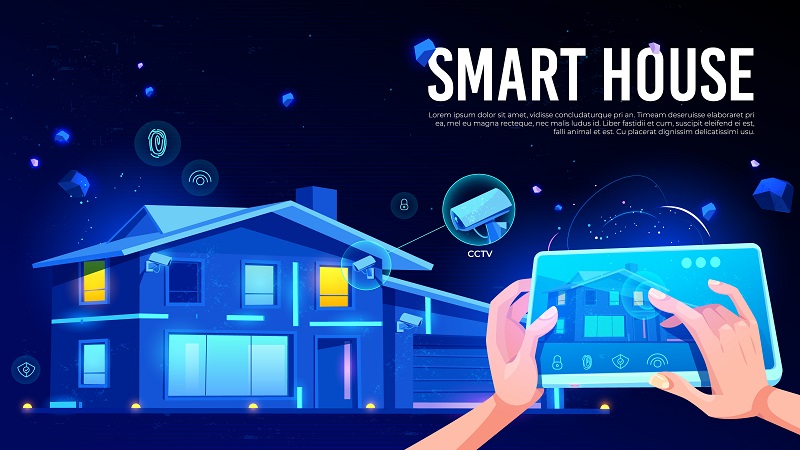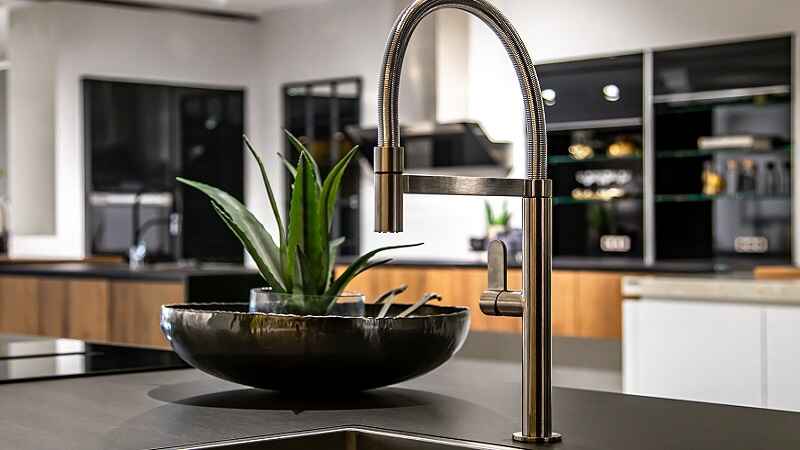In today’s world, ensuring the safety of your home and loved ones has become more important than ever. With increasing concerns about burglary, vandalism, and emergencies, home security systems play a vital role in keeping properties safe. These systems not only act as deterrents but also provide real-time alerts and peace of mind to homeowners.
1. Introduction to Home Security Systems
A home security system is a network of devices designed to detect, monitor, and alert homeowners about unauthorized access or potential threats. These systems combine technology such as sensors, cameras, alarms, and smart control panels to ensure full protection of a property.
Modern security systems go beyond simple burglar alarms — they include motion sensors, video surveillance, smart locks, fire alarms, and remote monitoring features. Whether you live in an apartment or a large house, having a reliable system helps safeguard your home 24/7.
2. Importance of Home Security Systems
Home security systems serve as the first line of defense against potential intruders and emergencies. Here’s why they are so important:
2.1 Protection Against Theft
A visible security system discourages burglars from attempting to break in. According to studies, homes without security systems are more likely to be targeted by criminals.
2.2 Real-Time Monitoring
Modern systems allow homeowners to monitor their property remotely via smartphones or computers. This ensures you’re always aware of what’s happening at home, even when you’re away.
2.3 Emergency Alerts
Most systems are connected to emergency services. In case of fire, gas leaks, or break-ins, the system can automatically alert authorities.
2.4 Insurance Benefits
Many insurance companies offer discounts on home insurance premiums for houses equipped with verified security systems.
2.5 Peace of Mind
Knowing that your family and possessions are safe offers invaluable peace of mind, especially for those who travel often or live alone.
3. Main Components of Home Security Systems
A home security system is made up of several devices that work together to detect and respond to potential threats. Let’s break down the essential components:
3.1 Control Panel
The control panel is the central hub of the system. It connects all security devices and allows users to arm or disarm the system, receive alerts, and communicate with monitoring services.
3.2 Security Cameras
Cameras are key to modern home protection. Indoor and outdoor cameras record footage that can be viewed live or saved for review. Many are equipped with night vision, motion detection, and two-way audio.
3.3 Motion Sensors
Motion sensors detect unusual movement inside or around the home. When triggered, they send an alert to the control panel or directly to your smartphone.
3.4 Door and Window Sensors
These magnetic sensors detect when doors or windows are opened or tampered with. They are one of the most basic yet effective components of any home security setup.
3.5 Alarm Sirens
When a sensor detects suspicious activity, the alarm triggers a loud siren to scare off intruders and alert occupants or neighbors.
3.6 Smart Locks
Smart locks replace traditional keys with code-based or smartphone-controlled entry systems, allowing homeowners to manage access remotely.
3.7 Smoke and Carbon Monoxide Detectors
These sensors add another layer of safety by alerting occupants to potential fire or gas hazards.
4. Types of Home Security Systems
Different homes require different levels of security. Understanding the various types of systems helps you choose one that suits your needs and budget.
4.1 Wired Security Systems
These systems use cables to connect sensors and cameras to the control panel. They are highly reliable but require professional installation.
Pros: Stable connection, no interference.
Cons: More expensive installation, limited flexibility.
4.2 Wireless Security Systems
Wireless systems use Wi-Fi or radio signals to communicate between devices. They are easy to install and can be managed via mobile apps.
Pros: Quick setup, flexible placement.
Cons: May rely heavily on internet connectivity.
4.3 Monitored Security Systems
These systems are connected to professional monitoring centers that respond to alerts. If an alarm is triggered, the center contacts emergency services immediately.
Pros: Continuous monitoring, fast emergency response.
Cons: Monthly fees.
4.4 Unmonitored Security Systems
In this setup, the homeowner receives alerts directly and decides how to respond. They are more affordable but require personal vigilance.
Pros: No recurring costs.
Cons: Delayed response if you’re unavailable.
4.5 Smart Home Security Systems
Smart systems integrate with home automation technology. You can control alarms, locks, and cameras through voice commands or smartphone apps.
Pros: High convenience, remote control, energy efficiency.
Cons: Higher upfront cost.
5. How Home Security Systems Work
The working principle of home security systems is simple yet highly effective. Here’s how they function:
-
Detection: Sensors detect unusual activity such as door opening, motion, or glass breakage.
-
Alert: The control panel processes the signal and triggers the alarm or notification.
-
Notification: The system alerts the homeowner via a siren, smartphone notification, or email.
-
Response: Depending on the setup, either the homeowner or the monitoring center responds to the incident by contacting emergency services.
This quick and automated process helps prevent or minimize potential damage.
6. Benefits of Home Security Systems
6.1 Prevents Crime
Visible cameras and alarm signs deter potential intruders. Studies show that even the presence of security signs reduces the risk of burglary.
6.2 Protects Valuables
From jewelry to important documents, home security ensures your valuables are protected even when you’re away.
6.3 Provides Remote Access
You can control and monitor your home through a smartphone app — lock doors, check live footage, or adjust settings anytime.
6.4 Monitors Fire and Gas Leaks
Modern systems detect more than intrusions. Smoke and CO2 sensors can save lives by providing early warnings.
6.5 Assists in Emergency Response
Some systems automatically alert police, fire departments, or medical teams when triggered.
6.6 Boosts Home Value
A secure home appeals to buyers, potentially increasing your property’s market value.
7. Modern Innovations in Home Security Systems
Technology has dramatically advanced home security, introducing features that make systems smarter and more efficient.
7.1 Artificial Intelligence (AI)
AI-enabled cameras can distinguish between people, pets, and objects, reducing false alarms.
7.2 Cloud Storage
Instead of relying on physical storage devices, modern systems use secure cloud storage to keep video recordings accessible anywhere.
7.3 Integration with Smart Devices
Security systems can connect with other smart devices such as thermostats, lights, and voice assistants for a fully automated home.
7.4 Biometric Access Control
Fingerprint and facial recognition systems add a higher level of personalized security.
7.5 Solar-Powered Cameras
For remote or off-grid locations, solar-powered cameras offer eco-friendly security solutions.
8. Choosing the Right Home Security System
Before investing in a home security system, consider the following factors:
8.1 Size of Your Property
Larger homes may require multiple cameras and sensors, while smaller apartments can use compact systems.
8.2 Budget
Determine your budget, including installation and monthly monitoring costs. Wireless and unmonitored systems are generally cheaper.
8.3 Smart Features
If you prefer convenience, look for systems that integrate with smart home platforms like Google Home or Amazon Alexa.
8.4 Connectivity
Ensure the system has reliable internet or cellular backup to avoid interruptions.
8.5 Brand Reputation
Choose trusted brands with good customer reviews and warranties to ensure quality performance.
9. Installation and Maintenance Tips
9.1 Professional Installation
While DIY systems are popular, professional installation ensures all components are placed optimally and work seamlessly.
9.2 Regular Maintenance
Check batteries, clean camera lenses, and test sensors regularly to keep the system running smoothly.
9.3 Software Updates
Smart systems require firmware updates to maintain security and compatibility.
9.4 Backup Power
Always have a battery or generator backup in case of power outages.
10. Common Mistakes to Avoid
-
Ignoring Blind Spots: Place cameras strategically to cover all entry points.
-
Using Weak Passwords: Secure your system with strong, unique passwords.
-
Neglecting Updates: Outdated software can create vulnerabilities.
-
Skipping Maintenance: Dust, moisture, or dead batteries can reduce performance.
-
Overlooking Privacy Settings: Adjust permissions to prevent unauthorized access to your data.
11. The Future of Home Security Systems
The future of home security systems is driven by artificial intelligence, automation, and sustainability. AI will make threat detection more accurate, while machine learning will enable systems to predict risks based on activity patterns.
In addition, the integration of 5G technology will allow faster communication between devices, improving response time. Eco-friendly innovations like solar-powered sensors and energy-efficient cameras will make home protection smarter and greener.
Soon, your security system may not only protect you but also manage your household — from locking doors automatically to notifying you when your kids return home.
12. Conclusion
A home security system is more than just a technological addition — it’s an investment in safety, comfort, and peace of mind. Whether it’s protecting against intruders, detecting fires, or offering smart control, these systems ensure your home remains a safe haven.
With continuous advancements in technology, today’s security systems are smarter, more reliable, and easier to use than ever before. Choosing the right system tailored to your home’s needs can provide long-term safety and convenience More Read



